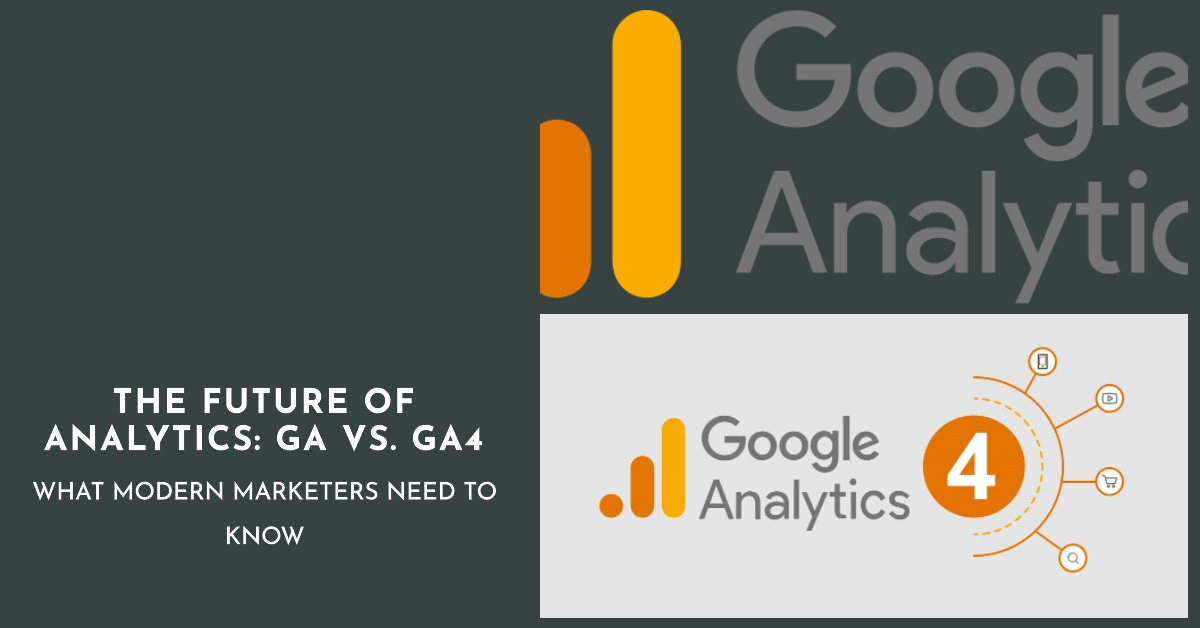GA vs. GA4: Evolution of Analytics for Modern Marketers
This blog explores the evolution of data analytics in the realm of digital marketing, focusing on the transition from Google Analytics (GA) to Google Analytics 4 (GA4). It highlights the legacy of GA and the need for a more advanced solution due to the complexity of consumer interactions. The introduction of GA4 brought a user-centric approach, event-based tracking, enhanced machine learning, and seamless cross-platform tracking. The blog emphasizes the benefits of upgrading to GA4, such as future-proofing, comprehensive data insights, and improved user experiences through personalized marketing campaigns. Embracing GA4 is viewed as a transformative journey that empowers modern marketers to understand and connect with customers at a deeper level.

In the ever-changing landscape of digital marketing, data analytics has become the backbone of decision-making for businesses. With the exponential growth of online platforms, understanding user behavior and optimizing marketing strategies has become paramount. For years, Google Analytics (GA) has been the go-to tool for marketers seeking valuable insights into their website's performance. But, ever since Google Analytics 4 (GA4) was introduced, it has ushered in a whole new era of analytics. In this blog, we will delve into the evolution of analytics from GA to GA4 and explore how this transformation is reshaping the way modern marketers approach data analysis.
The Legacy of Google Analytics (GA)
For a long time, Google Analytics has been the go-to choice and the industry standard when it comes to web analytics. Its intuitive interface, extensive metrics, and easy integration with websites have made it a favorite among marketers and website owners alike. GA provided valuable data on website traffic, user demographics, acquisition channels, and conversion rates, enabling marketers to make informed decisions and optimize their online presence.
However, as technology evolved, so did the complexity of consumer interactions on digital platforms. The rise of mobile devices, app-based interactions, and cross-device usage presented new challenges for traditional GA's tracking capabilities. This prompted the need for a more advanced analytics solution - leading to the development of Google Analytics 4.
Introducing Google Analytics 4 (GA4)
Google Analytics 4, introduced in 2020, represents a significant shift from its predecessor. Unlike the traditional GA, GA4 is designed to be more user-centric, focusing on individual user interactions across various devices and platforms. It leverages machine learning and artificial intelligence to provide more accurate insights into user behavior and allows marketers to create a more comprehensive view of the customer journey.
One of the most notable features of GA4 is the ability to track both web and app-based interactions seamlessly. This unified approach enables marketers to understand user engagement across all touchpoints, providing a holistic understanding of user behavior, irrespective of the platform used.
Key Differences between GA and GA4
-
Event-Based Tracking: While GA primarily relies on pageviews and sessions, GA4 adopts an event-based tracking model. Events represent user interactions, such as clicks, form submissions, video plays, and more. This allows marketers to measure specific actions and interactions rather than just page visits, offering a more granular view of user engagement.
-
Enhanced Machine Learning: GA4 integrates advanced machine learning algorithms to predict user behavior and provide insights that were previously challenging to obtain. These predictive analytics help marketers identify valuable segments and opportunities for growth.
-
User-Centric Approach: GA4's focus on individual users enables marketers to create tailored experiences based on user behavior. It tracks users across devices, providing a better understanding of their interactions and preferences, which can lead to more personalized marketing campaigns.
-
Streamlined Reporting: GA4 simplifies reporting with its Analysis Hub, offering more intuitive and customizable data visualizations. Marketers can easily create custom reports and dashboards, making data analysis and reporting more efficient.
Benefits of Upgrading to GA4
-
Future-Proofing: As technology continues to evolve, GA4's user-centric approach ensures that businesses can adapt to changing consumer behavior and preferences effectively.
-
Comprehensive Data Insights: GA4's event-based tracking and cross-platform capabilities provide a deeper understanding of user interactions, allowing marketers to identify opportunities for optimization and growth.
-
Enhanced User Experience: With the ability to create personalized experiences based on user behavior, marketers can engage users more effectively, leading to increased conversions and customer satisfaction.
Conclusion
The evolution of analytics from Google Analytics to Google Analytics 4 has revolutionized the way modern marketers approach data analysis. GA4's user-centric approach, advanced tracking capabilities, and machine learning insights offer invaluable advantages in an increasingly complex digital landscape. By upgrading to GA4, marketers can future-proof their analytics strategy and unlock a new level of data-driven marketing success. Embracing GA4 is not just an upgrade; it is a step towards understanding and connecting with customers like never before. So, seize the opportunity, and embark on this transformative journey to stay ahead in the digital marketing realm.










